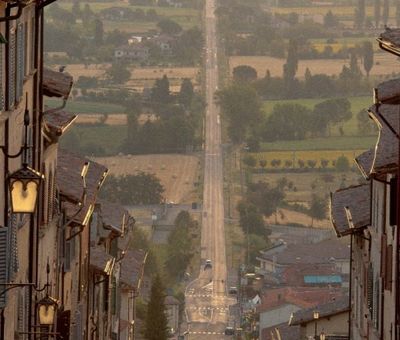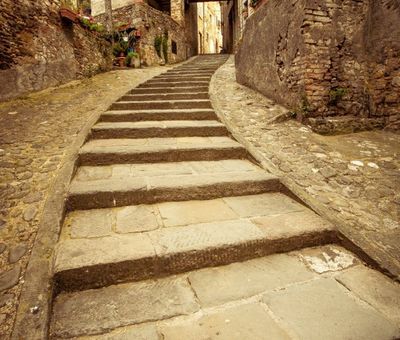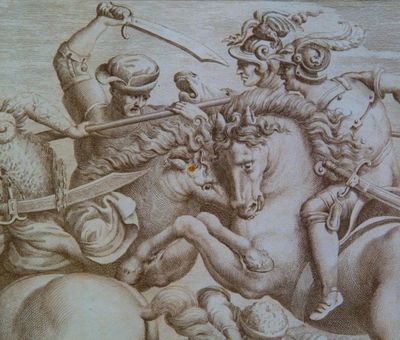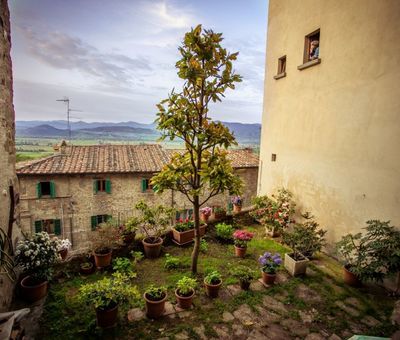A medieval street dedicated to Saint Francis
An ancient road runs from Anghiari to Sansepolcro, constructed at the end of the 14th century to unite two key places in the life of Saint Francis of Assisi: the Chiesa della Croce and the Hermitage of Montecasale. The street belongs to Anghiari and is sharp and linear like a sword, cutting the Tuscan portion of the Tiber Valley in two. This valley is the artificial border with the nearby Umbria, to which the rest of the plain belongs. The street is an incredible visual example of perspective. Is it any surprise, then, that Piero della Francesca—a pioneer of linear perspective in art—was born on the other end of this connecting street?
The Battle of Anghiari’s painted by Leonardo da Vinci
Our street is the one remembered in the story of the Battle of Anghiari, where the Florentines, right here on the border of their land, fought against the Milanese on June 29, 1440. The event was later painted by Leonardo da Vinci. It had repercussions so significant that it became part of the collective national history and heritage. In the battle setting, which is just a few minutes’ walk from the historic center, you’ll find a chapel. Since 1441, it’s stood there as a tangible reminder of the Florentine victory. Arriving via your own two feet, coasting through Anghiari and crossing cultivated fields, is magnificent—particularly during warm summer evenings. Since 1441, every June 29, the Palio takes place, commemorating this local story. Participants run from the battle setting to the piazza beyond the walls, upward toward this linear street. This evokes classic “victory” announcements, like the Pheidippides-inspired marathon runners who run to declare their wins.
Roads, side streets or World Heritage Sites?
The history of Anghiari seems to have halted just as the Renaissance was about to begin, a moment before modernity took shape. It’s like a dewdrop forever bending the barely-there light of a dawn that’s just appeared. In the streets of the historic center, the fact that this was such a transitional moment is still evident. Medieval traditions and classical elements co-exist in the buildings. This union evokes a sense of the artisanal quality within these town walls. Many residents possess the area’s traditional artistic know-how and certainly “know how” to use it. It’s no coincidence that those stones hide a “primitive” painting, the product of one or more 15th century workshops. Though the names of such workshops are unfortunately unknown, the expertise of their artists is made clear in the unique strength of the figures depicted: medieval icons in Renaissance dress.
A place for soldiers of fortune
Along the streets of the center, you’ll see many houses that were once home to families of various “soldiers of fortune.” So much history has passed through here, much of it forgotten or buried in age-old documents. Now and then this history has been dug up by tenacious researchers. For example, Federico da Montefeltro, a man from Urbino and one such “soldier” during his day, visited with his wife and court in the 1470s. It’s surprising! There were plenty of these mercenary leaders who lived elsewhere but who brought money that they converted into houses, palaces, lands and estates - many estates, mind you. This may be the reason that in the Anghiari surroundings, at every small hill, you’ll find old country homes. Today, those seeking refuge from the chaos of everyday life reside here.









